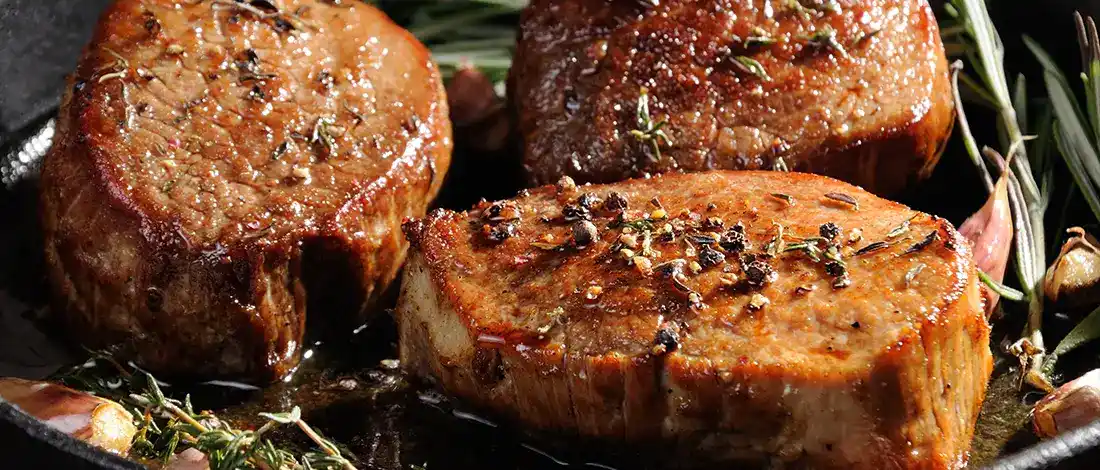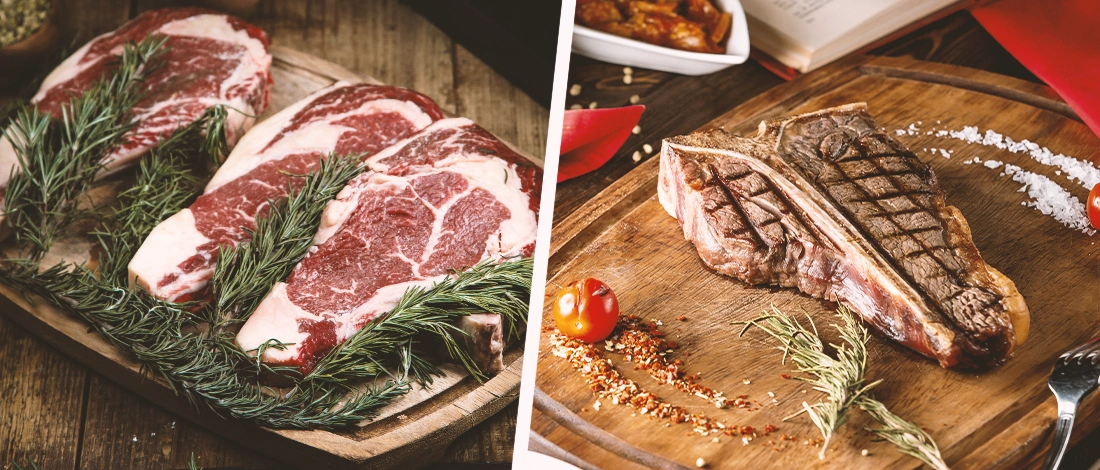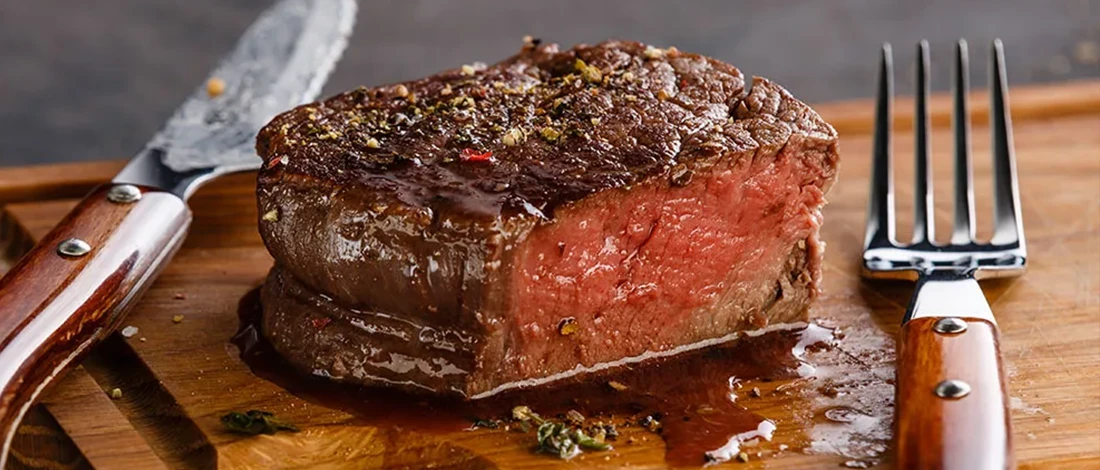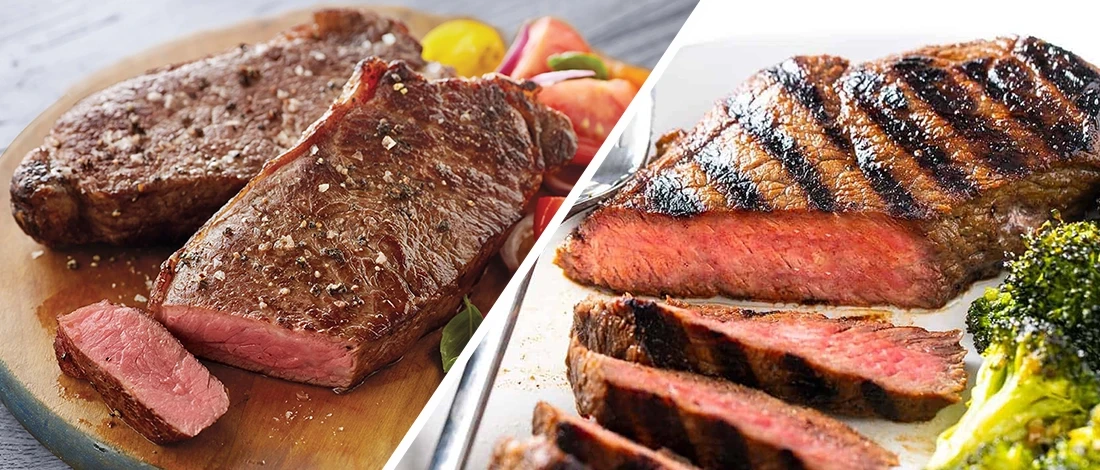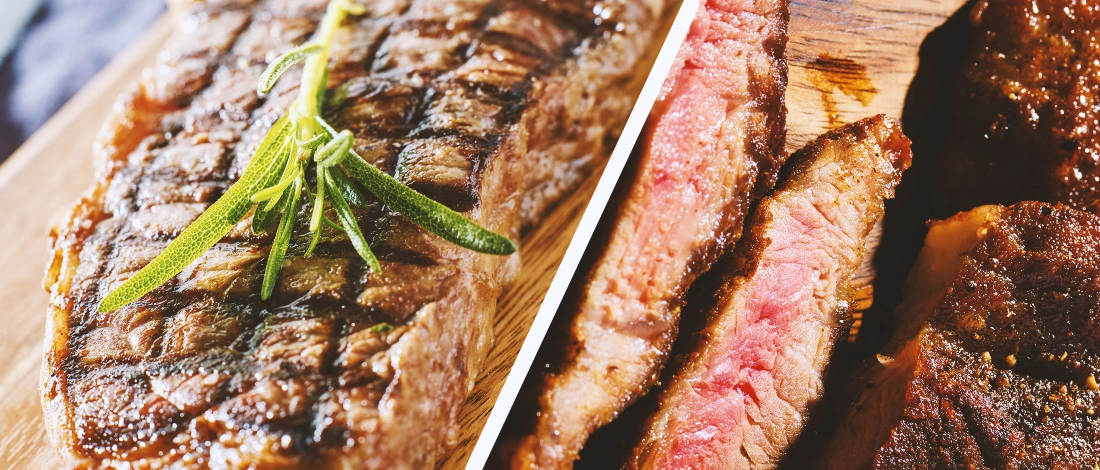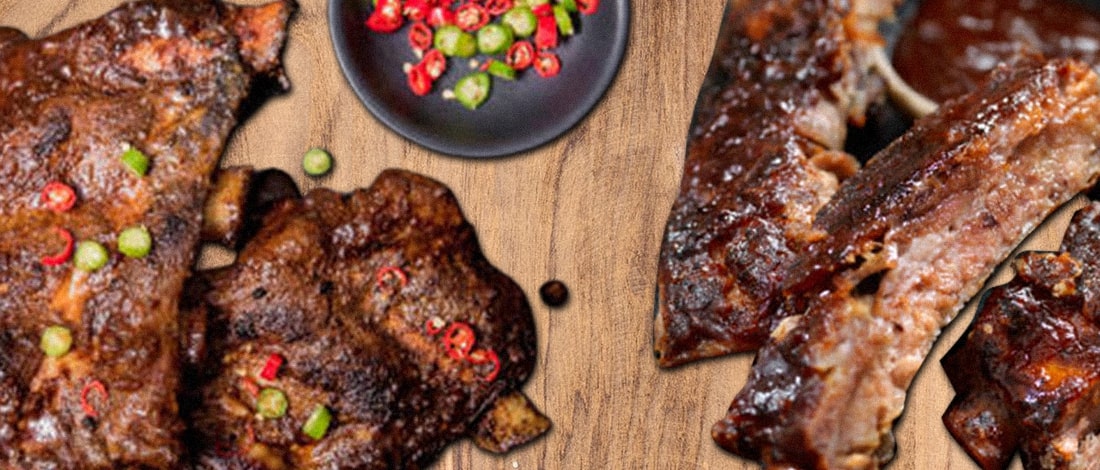Ribeye vs. Sirloin, that is the question.
And the question is not easy at all. You will hear that everything depends on the preference, but other things can make the final decision on which cut to select.
After spending hours of reading and researching to understand these two cuts better - the difference, difficulty in preparation, and of course the cost, we give you the answers below.
Quick Summary
- Sirloin steak is lean, comes from the upper back part of the animal, and has a tender flesh taste. Ribeye steak is cut from the rib section, coated with fat, and offers a strong and juicy taste.
- Ribeye contains more fat and is more expensive, while Sirloin has less fat, fewer calories, and more protein.
- A 2010 PubMed study investigated consumer preferences for constant-weight ribeye, top loin, and sirloin steaks from beef carcasses across five weight/loin muscle area groups and found that consumers preferred ribeye steaks among different steak types [1].
- Ribeye is tastier with juicy marbling, whereas Sirloin is slightly more tender and often a cheaper option.
Ribeye vs Sirloin Steak - An Overview
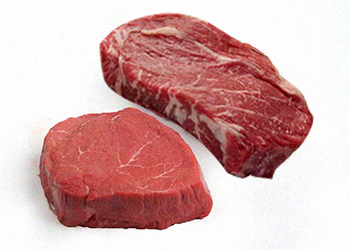
Ribeye and Sirloin steaks are beef steaks. It's difficult to tell which of these two cuts is a little better as it depends on many reasons.
Both are known as main meat cuts, and they offer a delicious and juicy taste that steak lovers cannot resist. However, these two cuts of steak have quite a few differences.
What is Ribeye Steak?
Ribeye steak is a cut made from premium beef from the rib section of animals, the part between the shoulder and the short loin, known as the chunk. This is one of the more flavorsome cuts of steak as it is coated with fat.
Ribeye steaks are usually cooked fast due to their fat content. Each steak serving contains 190 calories, 4 grams of saturated fat, and 23 grams of protein.
When cooked, it provides steak lovers with a strong and juicy taste. You can serve the beauty steak either to the bone or boneless.
Ribeye steaks are also known by other names like Delmonico, Scotch fillet, Spencer, etc. There are also different cuts of Ribeye.
Prime Ribeye is more expensive and can come with bone or boneless.
Wagyu Ribeye has fat marbling over the meat, making it one of the best premium steaks in the prime category. Because of this, most ribeye steaks are a bit more pricey than the other steaks.
What is Sirloin Steak?
The common sirloin steak cut comes from the upper back part of the animal, the primal or subprimal loin.
This popular steak is lean, with a bit of connective tissue and not much fat. It has a rich smell and natural flavors and has a tender flesh taste.
There are several cuts of this steak. New York Strip steak is a particular cut of Sirloin, usually boneless.
You will hear one more name - Kansas City steak, which can be a good choice if you want a bone-in strip steak.
Sirloin steaks can have two modifications, depending on the part of the cow. There is a top Sirloin cut of meat from the loin of the cow.
Some people prefer it as it is richer, more tender, and has a strong beefy flavor. But top sirloin steak can be more expensive.
The bottom sirloin is from the back of the animal; it is bigger, not too soft, and less costly.
Top sirloin has fewer calories and more protein. Each steak serving contains 150 calories, 1.9 grams of saturated fat, and 26 grams of protein.
It is characterized by extreme softness and a full beefy flavor. Sirloin steaks are well-marbled, and tender, and their taste is very good. This type of juicy steak is often served boneless.
“I hate reality but it's still the best place to get a good steak.”
- Woody Allen, Actor
A Closer Look At The Differences

Part of the animal
First of all, they come from two different pieces of beef. The beauty steak is a cut that comes from the ribs, while Sirloin comes from the top back area, and behind the ribs area.
Fat
Ribeye cut contains much more fat; on the other hand, Sirloin has less. It also has fewer calories and saturated fat, while it has more protein than a Ribeye steak.
Bones
Ribeye steak can be served with or without bones; the Sirloin cut is mostly boneless.
Price
Because of the tenderness and marbling, ribeyes are considered among the best cuts.
Marbling ups the price, so if you want a ribeye, get ready to pay more. If you want a cheaper option, then get sirloin. It will be a better choice if your budget is limited.
A 2012 study found that consumers' steak selections were not significantly influenced by price; instead, preferences for marbling, color, and thickness played a more crucial role in their choices, demonstrating that consumers may opt for steaks showcasing their preferred attributes regardless of higher costs [2].
Taste
Ribeye is tastier, full of juicy marbling, and has a strong flavor, while a sirloin cut is a slightly more tender steak. A Rib eye steak is less versatile, while the Sirloin is more flexible.
Read More: Filet vs Sirloin
Preparing Ribeye Steak and Sirloin Steak– Is There Any Difference?

If you want to make the best out of this meat, you need to know how to cook different steak cuts at home. Both types of steaks - Sirloin and Ribeye - are perfect for grilling.
You can similarly prepare both steaks, but the difference may be in preparation for grilling, the temperature, and the cooking length.
-
Place at room temperature
Take the steak out of the fridge for at least 30 minutes before you start to cook so it can come to room temperature. Don't add the salt right before you put the steak on the grill.
Do it after cooking or as soon as you take it out of the fridge. As a true lover of real steaks, I recommend not spicing it up too much because you will lose the meat's authentic taste. It applies even to other steak cuts, such as the club steak.
-
Marinate if dry
A sirloin steak can be drier, so we recommend marinating it. If you do not marinate it for a few hours before roasting, the steak can be dry and tough.
If it is not dry, marinating is not necessary; they will taste excellent with just a little salt and pepper.
-
Heat the grill before cooking
Cook the meat on a preheated grill only. It would be best if you bake your rib eye at a high temperature, so the grill should almost smoke when you place the meat.
When you put meat on a pre-heated grill, it will not lose its juiciness, and you will have great results.
Also, when cooking a Rib eye, do not turn it and stab it non-stop from side to side when you put it on the grill.
It is only necessary to turn to the other side after a specific time to cook well.
You can cook a steak for a shorter or longer time, depending on your preference. For a crispy crust, you can put it in a pan.
-
Cooking time depends on the cut
Sirloin is softer, and cooking can last a little longer. Use this simple rule to be sure about how long it should be on the grill: if it has fat content, roast it quickly at a high temperature, and if it does not, leave it longer at a lower temperature.
When you put it on the grill, make sure that it is heated so that when cut, it does not drop juices and starts to simmer instead.
-
Let the meat rest before serving
Cook the steak evenly on both sides, then let it rest for a few minutes so that the juices are evenly distributed. It applies even to the bone in ribeye.
Keep in mind that the food will continue to "roast" during aging, so fold from the heat source for a few minutes to reach the right flavor. It is best to serve them medium or medium-rare.
Read More:
References:
- https://pubmed.ncbi.nlm.nih.gov/20875706/
- https://pubmed.ncbi.nlm.nih.gov/22244895/


